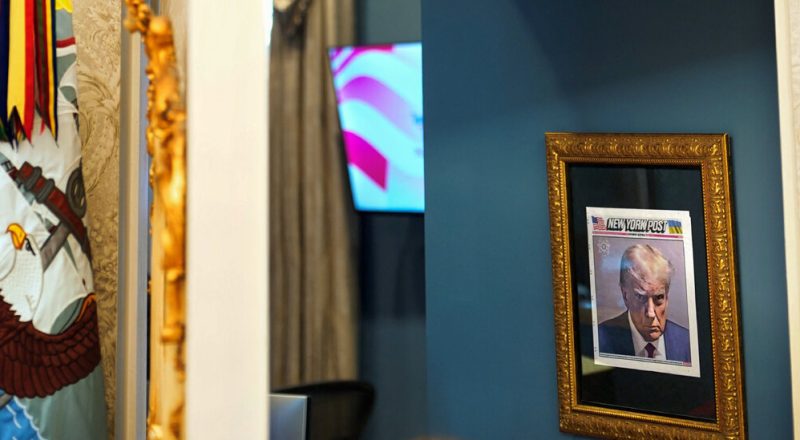There is no question that Donald Trump’s ambition in the first 100 days of his return to the Oval Office was to set a new standard for presidential accomplishment. To rival, even surpass, the scope of Franklin Roosevelt’s efforts nearly a century ago, when he moved so quickly — and so decisively — that he established the first 100 days as a yardstick for executive action.
But as consequential as they have been, and as exhausting as they’ve felt to many Americans, these first months of Trump’s second term fall far short of what Roosevelt accomplished. Yes, Trump has wreaked havoc throughout the federal government and destroyed our relationships abroad, but his main goal — the total subordination of American democracy to his will — remains unfulfilled. You could even say it is slipping away, as he sabotages his administration with a ruinous trade war, deals with the stiff opposition of a large part of civil society and plummets in his standing with most Americans.
If measured by his ultimate aims, Trump’s first 100 days are a failure. To understand why he failed, we must do a bit of compare-and-contrast. First, let’s look at the details of Trump’s opening gambit. And second, let’s measure his efforts against the man who set the terms in the first place: Franklin Delano Roosevelt. To do so is to see that the first 100 days of Trump’s second term aren’t what we think they are. More important, it is to see that the ends of a political project cannot be separated from the means that are used to bring it into this world.
Trump began his second term with a shock-and-awe campaign of executive actions. He, or rather the people around him, devised more than 100 executive orders, all part of a program to repeal the better part of the 20th century — from the New Deal onward — as well as fundamentally transform the relationship between the federal government and the American people.
His ultimate aim is to turn a constitutional republic centered on limited government and the rule of law into a personalist autocracy centered on the rule of one man, Donald J. Trump, and his unlimited authority. Trump’s vision for the United States, put differently, has more in common with foreign dictatorships than it does with almost anything you might find in America’s tradition of republican self-government.
To that end, the president’s executive orders are meant to act as royal decrees — demands that the country bend to his will. In one, among the more than four dozen issued in his first weeks in office, Trump purports to purge the nation’s primary and secondary schools of supposed “radical indoctrination” and promote a program of “patriotic education” instead. In another, signed in the flurry of executive activity that marked his first afternoon back in the Oval Office, Trump asserts the power to define “biological” sex and “gender identity” themselves, in an attempt to end official recognition of trans and other gender nonconforming people.
